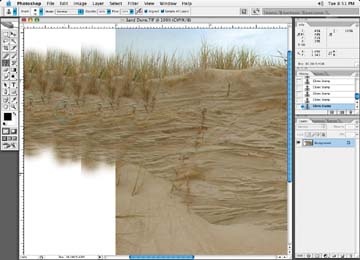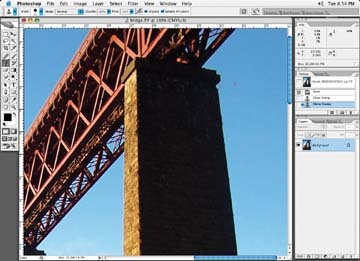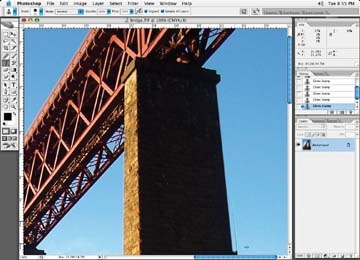Using the Clone Tool
The Clone tool (Figure 3-29) basically uses two points: one point reads the image information, and the other point writes that information. Adjusting the Clone tool brush size adjusts the size of the read and write points. The distance between the two points is adjustable, and you must take care to keep from repeating the same information as you brush along.
For cloning straight edges, hold down the Shift key and click along the length of the edge you are trying to fix (Figure 3-30).

Figure 3-29. One Clone tool point reads the information, and the other writes that information; sometimes the information repeats itself: a very undesirable effect

Figure 3-30. Before: cloning an edge of an image with the Shift key
By holding down the Shift key, the Clone brush will follow your every click (Figure 3-31).

Figure 3-31. After: cloning an edge of an image with the Shift key (the second point is clicked while holding down the Shift key)
Cloning Human Faces
I like to use human faces to demonstrate corrections because everyone knows what a face should look like, and if anything is off, people will notice. This forces me to get it right! To smooth out rough skin or some other ...
Get Commercial Photoshop Retouching: In the Studio now with the O’Reilly learning platform.
O’Reilly members experience books, live events, courses curated by job role, and more from O’Reilly and nearly 200 top publishers.

